Foods of War: Hardtack
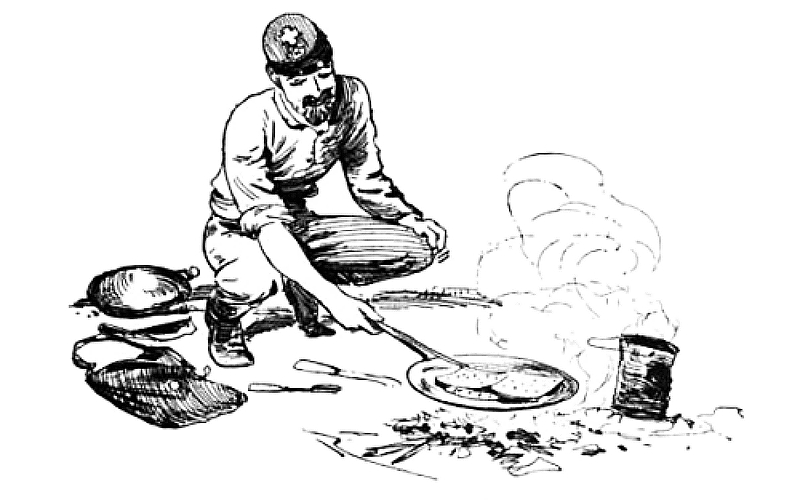
Editor’s note: This is the first piece in a new series we’ll be publishing called “Foods of War.” The intention is to examine the historicity behind different rations and meals served to soldiers and sailors over the years, and see if their reputations are deserved. Finally, since it wouldn’t be a Molotov Cocktail article without some element of drinking, we’ll incorporate a period-appropriate drink pairing, principally so that we’ve got something to wash it all down. Keep an eye out for future posts, and cheers!
History
From MREs, to C rations, to HooAH! Bars, the provisions consumed by soldiers and sailors have a storied history that illustrates the nutritional and culinary creativity necessitated by conducting field operations. Even among the ranks of Spam or S*it on a Shingle (SOS), perhaps the most infamous military food of all time is hardtack: a baked biscuit which, in some form, fed armies and navies from the beginning of recorded history until the dawn of World War I.
The origin of Hardtack’s name itself is a source of some disagreement. Many argue that it stems from the texture of the item combined with British sailor slang for food, or “tack.” Others say the term originated during the American Civil War. Some maintain that the name derives from the biscuit being “hard as tacks” – somewhat uninspired.
In a time before refrigeration, pasteurization, canning, or preservation through chemical additives there were only so many ways a food could be kept without spoilage. Salting and dehydrating foods was a relatively easy way to make them last. Baking cereal grains into a dense biscuit made for easy transport and a reduced risk of spoilage (although, as we will learn, vermin were a different story). Most importantly (especially for operational planning), it was cheap. A form of hardtack was given as rations to Roman armies under the name bucellatum and during the 16th Century, British sailors could expect a daily ration of 1 gallon of beer and 1 lb. of hardtack.
While hardtack was issued right up until World War I, the most recent and descriptive accounts of the food come from the American Civil War. Soldiers often referred to the biscuits as “worm castles” because all too often they would become home to maggots and weevils. One soldier recalled the sorry state of hardtack that he and his comrades were to consume:
A brigade officer of the day called out sharply to some of our men as he passed along the line: “Throw that hard tack out of the trenches. Don’t you know, men, you’ve been told not to throw your rations in the trenches” Prompt to obey, the men threw out the hard tack, saying as they did, “We’ve thrown it out several times, sir, but it will crawl back.”
When the hardtack wasn’t infested with insects, soldiers needed to soften the biscuits for consumption in a variety of ways, including whacking them with the butt of their rifles, soaking them in coffee, or softening them in water to then be fried in pork fat. Delicious.
Naturally this is something any student of war should taste. While there are commercial variants available, to really get the full effect one must head to the kitchen and whip up a batch of their own.
Recipe & Instructions
There really isn’t a recipe for hardtack. Flour and water ratios vary from source to source (anywhere between 3:1 to 5:1), and over time each recipe yields a similar product as the water evaporates from the biscuit and it hardens. With that in mind, combining approaches gleaned from several sources, this seemed to be a reasonably authentic approach:
- 2 cups flour
- ½ cup water
- Several pinches of salt
Combine in a bowl and work until it forms a stiff dough (this may take a while).
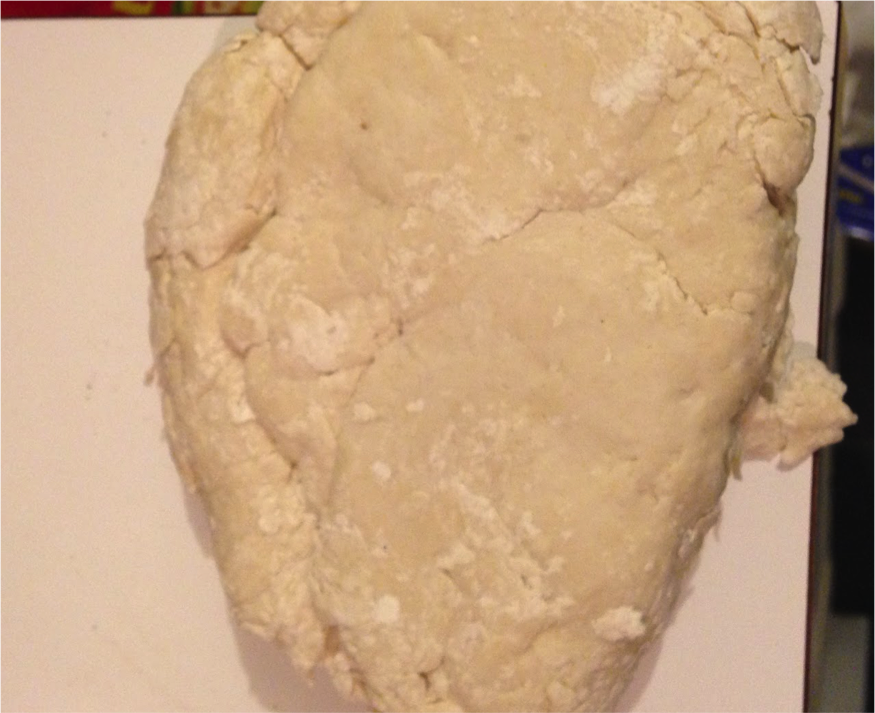
Roll out to ½ inch thick and cut into 3×3 inch squares. Make indentations with a chopstick or skewer on each side but don’t poke all the way through.
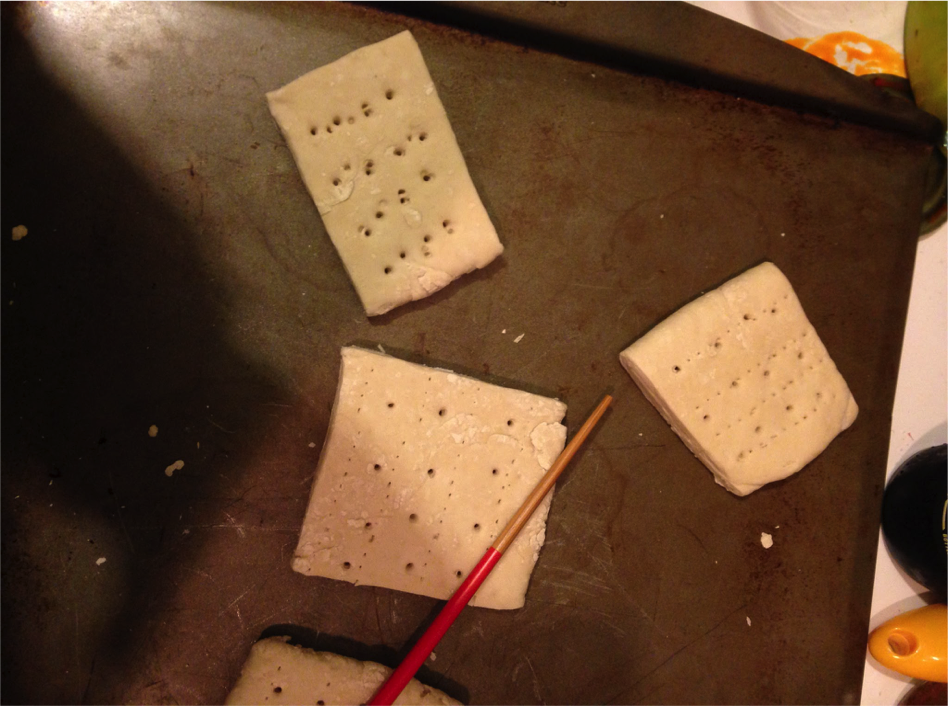
Bake at 375 F for 30 mins, remove from oven, flip, bake for another 30 mins. Remove from oven and let cool.
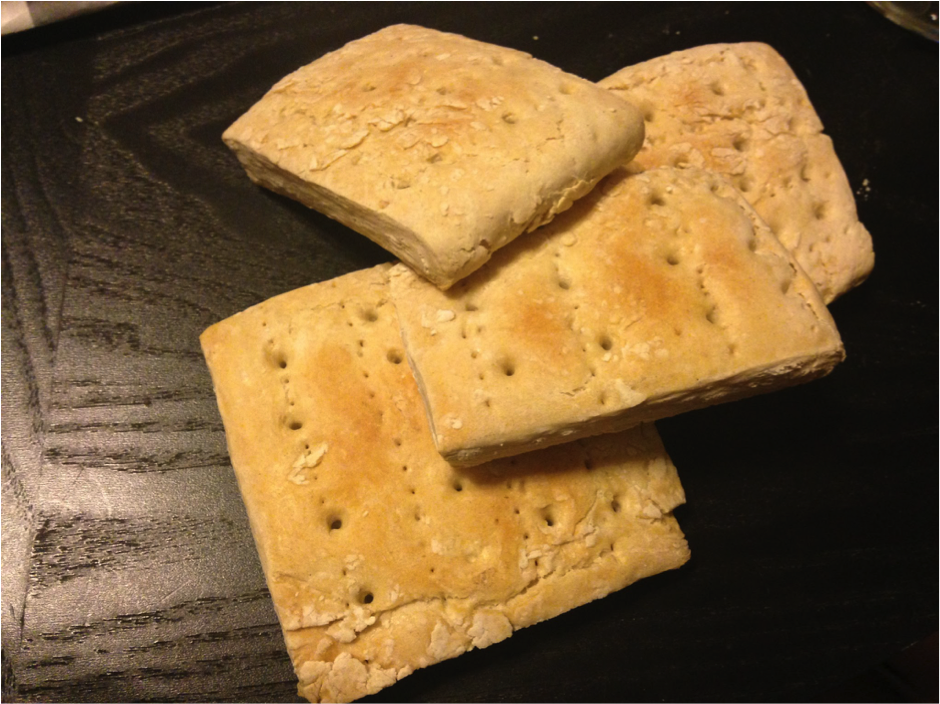
Tasting Notes
The most striking thing about hardtack is its density. Even straight out of the oven it has very little give, and if dropped on the counter it doesn’t chip or break. Unsurprisingly, it is hard. Really hard, but it still could be eaten without soaking (although I tried to break a piece by hand the morning after and was unsuccessful). Even with some residual moisture and doughiness, it’s unpleasant. I must also mention that modern dental hygiene makes this easier to eat as well. The teeth (or lack thereof) of our forefathers would have been ill equipped for chewing through what is essentially a soft rock.
As taste goes, there was a nice fresh baked bread quality, but I imagine this would fade significantly after months below deck or in a Union Army warehouse. It has a mellow toastiness and is a bit salty, but it’s mostly bland.
Drink pairing
So what does the discerning strategist drink with such a storied food? One could give a nod to the food’s Civil War history and enjoy it with a Kentucky Bourbon (Old Crow was allegedly General Grant’s favorite). One could also reach to the food’s rich, maritime history and pair it with a rum of some respectable quality. Ultimately, taking into account hardtack’s “flavor,” a more appropriate beverage will need to be something thirst-quenching to contrast the fact that you are essentially eating a shingle. Yes, the most sensible answer is beer.
I tasted the freshly made hardtack with 4 potential matches: Brooklyn’s Sorachi Ace, Redhook ESB, Goose Island IPA, and Unita’s HooDoo Kölsch Style Ale. In true hardtack form I dipped a bit of the stuff into each glass to make it soft enough to chew (I would not recommend this).
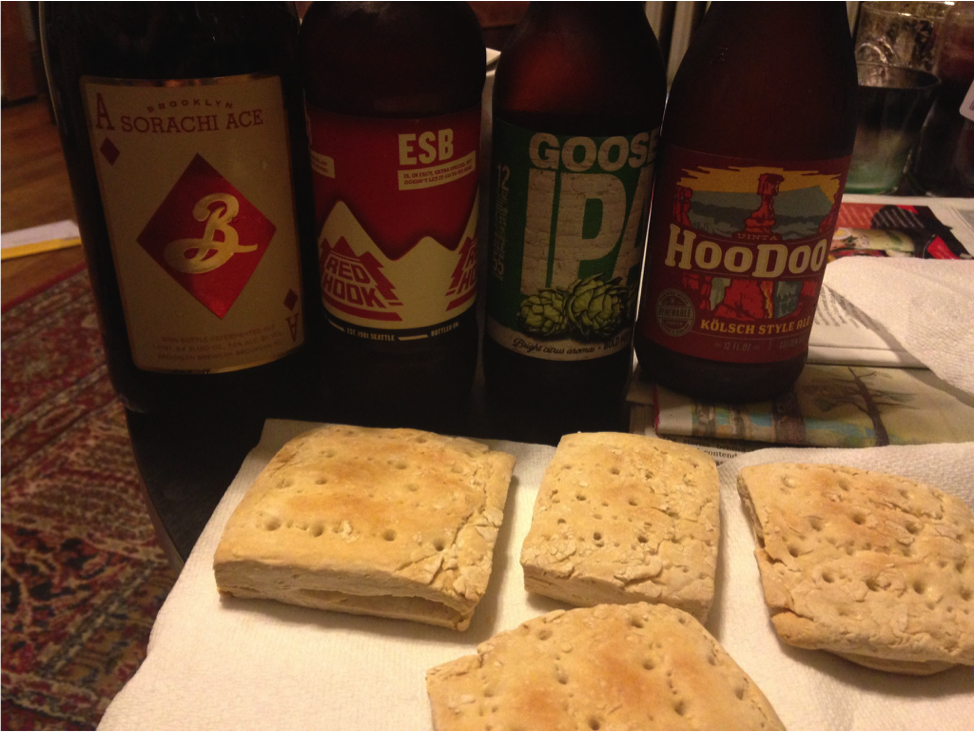
While an exceptional ale that perfectly highlights Japanese Sorachi Ace hops, Brooklyn’s offering proved to be too hot and too bright for the rather dull hardtack. Goose Island IPA fell short as well, with too much pronounced hop bitterness. It overwhelmed the “delicate” flavors of the hardtack. Unita’s Kölsch, while a lovely thirst quencher on a summer day, was too clean, and I found that combined with the hardtack the beer lost its crispness and became muddled and grainy. The pairing I found most appropriate was Redhook’s ESB. An exceptionally balanced beer, with toffee notes from crystal malt, the ESB really complements the toasted exterior of the hardtack. The subtle wood and spice notes from Willamette and Tettnanger hops provide a nice contrast to the bland density of the hardtack’s center.
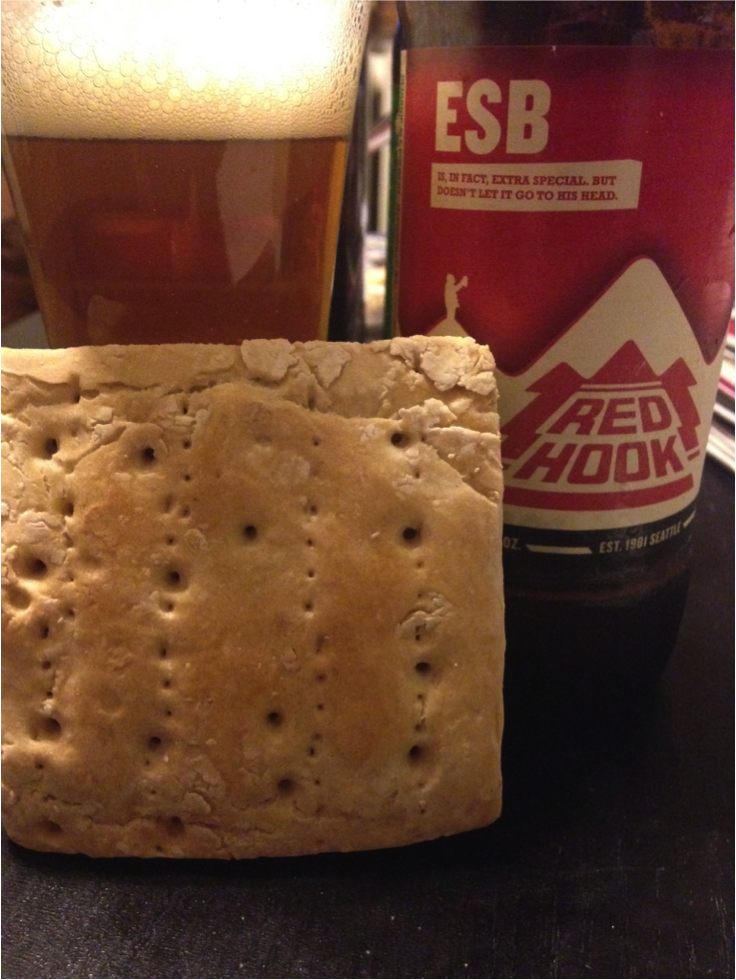
Will I be making hardtack again? A zombie apocalypse not withstanding, probably not. However, this experiment does make one appreciate what our ancestors had to stomach (literally) while on the battlefield. I would recommend making hardtack for this reason alone. What to do with the excess? Sneak it into your kids’ lunch box as a fun surprise. Put out a plate in your kitchen at work to show your colleagues how much you appreciate them. Use it in place of clay pigeons for target practice. Market it as a nutritional supplement bar used by ancient warriors and hock it outside of Crossfit gyms. You can even stitch a few slabs together to make a bulletproof vest modeled after Roman armor. The options are limitless!
Just don’t eat it.
James Sheehan is a homebrewer and cider-maker. When he’s not fermenting things he works for a Washington, D.C. based democracy education non-profit. He holds an MA in Terrorism, Security, and Society from King’s College, London.

